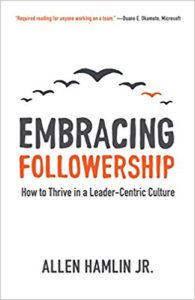Have you ever been in a work environment where you’ve had issues with your supervisor? Ever had disagreements with your boss? If you’re like most people, you probably have. Many factors can contribute to an uneasy work environment, but the most common is the employee / boss relationship.
In his book, The Truth About Employee Engagement, author and consultant Patrick Lencioni says there are three signs of a miserable job. 1. Anonymity – People cannot be fulfilled in their work if they are not known. 2. Irrelevance – Everyone needs to know that their job matters. 3. Immeasurement – Employees need to be able to gauge their progress and their level of contribution to the organization.
 These three factors all relate to the employee / boss relationship. If your boss doesn’t really know you, if he doesn’t let you know you matter, if she doesn’t give you goals and guidelines by which to measure your work, you’ll most likely end up miserable.
These three factors all relate to the employee / boss relationship. If your boss doesn’t really know you, if he doesn’t let you know you matter, if she doesn’t give you goals and guidelines by which to measure your work, you’ll most likely end up miserable.
Striving for a good relationship with your boss is vital if you’re going to be successful at work. And maintaining that relationship is directly related to how long you will stay employed.
Having worked for lots of bosses in my ministry career, I’ve found the key to keeping a great relationship with your boss. It’s just one word. “Distance.”
Physical Distance
The key question is, how close is your office to your bosses? I have a friend whose boss works in a different state, 400 miles away. Needless to say, this causes issues. I’ve worked in a large, church facility that had four different office locations in four different parts of the building. Again, this led to issues. If you’re in a multisite environment, your boss may be in a different building in a different part of town. While some of these issues can be worked through, suffice it to say the less physical distance between your office and your bosses, the better. Continue reading

 Use Email R-Codes
Use Email R-Codes
 In Jim Collin’s classic book, Good to Great, he introduces readers to the idea of a Hedgehog Concept. Collins says the idea came from a famous essay by Isaiah Berlin called “The Hedgehog and the Fox.” It’s based on the ancient Greek parable: “The fox knows many things, but the hedgehog knows one big thing.” The fox uses multiple ideas and numerous strategies in its battles with the hedgehog. But, says Collins, the hedgehog always wins by using one simple, surefire approach – curling up into a ball. When the hedgehog employs this defensive position, it exposes his sharp spikes to deter attacks from predators. Despite the many and varied tactics the fox uses, the hedgehog always emerges victorious by using his one, focused strategy.
In Jim Collin’s classic book, Good to Great, he introduces readers to the idea of a Hedgehog Concept. Collins says the idea came from a famous essay by Isaiah Berlin called “The Hedgehog and the Fox.” It’s based on the ancient Greek parable: “The fox knows many things, but the hedgehog knows one big thing.” The fox uses multiple ideas and numerous strategies in its battles with the hedgehog. But, says Collins, the hedgehog always wins by using one simple, surefire approach – curling up into a ball. When the hedgehog employs this defensive position, it exposes his sharp spikes to deter attacks from predators. Despite the many and varied tactics the fox uses, the hedgehog always emerges victorious by using his one, focused strategy. Allen Hamlin Jr’s book Embracing Followership – How to Thrive in a Leader-Centric Culture is a fascinating look at the unique nature of followership, its relation to leadership, and the critical way it builds the kingdom and enhances the body of Christ. This work dives into the topics of influence and authority, formal and informal power structures, and is reminiscent of John Maxwell’s 5 Levels of Leadership, Mike Bonem & Roger Patterson’s Leading From The Second Chair, and Clay Scroggin’s How To Lead When You’re Not In Charge. However, Hamlin’s approach is unique in that it focuses specifically on the follower. Here are three areas that stood out to me.
Allen Hamlin Jr’s book Embracing Followership – How to Thrive in a Leader-Centric Culture is a fascinating look at the unique nature of followership, its relation to leadership, and the critical way it builds the kingdom and enhances the body of Christ. This work dives into the topics of influence and authority, formal and informal power structures, and is reminiscent of John Maxwell’s 5 Levels of Leadership, Mike Bonem & Roger Patterson’s Leading From The Second Chair, and Clay Scroggin’s How To Lead When You’re Not In Charge. However, Hamlin’s approach is unique in that it focuses specifically on the follower. Here are three areas that stood out to me.
 Typically, reasons are given. You’ll probably disagree with most of them. Other times the much more ambiguous “no longer a good fit” explanation is offered. That’s just confusing.
Typically, reasons are given. You’ll probably disagree with most of them. Other times the much more ambiguous “no longer a good fit” explanation is offered. That’s just confusing. I hear so many brilliant and inspiring thoughts each year, I try to tweet them all. But, because I can’t keep up, last year I wrote a blog on the
I hear so many brilliant and inspiring thoughts each year, I try to tweet them all. But, because I can’t keep up, last year I wrote a blog on the  Reviewing Sticky Leaders, by Pastor Larry Osborne was a joy because the insights in this book are inspiring, important, and easy to understand. As a church consultant, I’ve read many wonderful books on church leadership, and Sticky Leaders does not disappoint. I highly recommend you read it. Here are four areas Osborne emphasizes that are worth considering.
Reviewing Sticky Leaders, by Pastor Larry Osborne was a joy because the insights in this book are inspiring, important, and easy to understand. As a church consultant, I’ve read many wonderful books on church leadership, and Sticky Leaders does not disappoint. I highly recommend you read it. Here are four areas Osborne emphasizes that are worth considering.